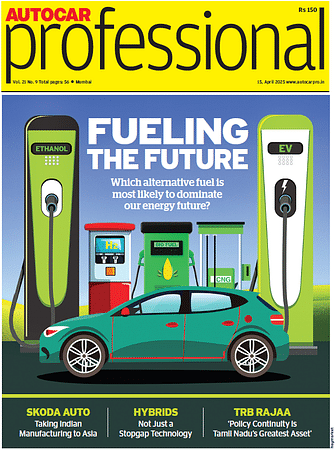European auto industry welcomes transparency for customers on CO2 from heavy-duty vehicles
Following the publication today of the European Commission’s strategy for CO2 emissions from trucks and buses
Following the publication today of the European Commission’s strategy for CO2 emissions from trucks and buses, the European commercial vehicle industry has welcomed the introduction of a certification system which would give customers full transparency on fuel efficiency.
“Fuel efficiency is a top priority for the transport companies who buy and use trucks and buses, because fuel accounts for over one-third of their total operating costs,” said Erik Jonnaert, secretary general of the European Automobile Manufacturers’ Association (ACEA). “Fuel efficiency is therefore the number one competitive factor in developing and selling heavy-duty vehicles.”
By developing a computer simulation tool and test procedures based on real-world data for certifying CO2emissions, the Commission has laid a solid foundation for improving consumer information. This simulation tool, which is called VECTO and is still in prototype phase, will be able to calculate the specific emissions data for each individual bus or truck configuration. “This system will empower customers to compare and choose the most fuel-efficient vehicle combination adapted to their needs,” explained Jonnaert. “Customers are the best regulators for fuel efficiency.”
ACEA stresses that CO2 emissions from trucks and buses cannot be addressed via a 'one-size-fits-all' policy, and that an approach that introduces mandatory emission limits would not necessarily translate into improvements in the real world. With several thousand shapes and sizes of trucks and buses, the heavy duty vehicle market’s complexity could not possibly be reflected in such a generalised approach to regulation.
“As an industry we need to be as close to the real market as possible, rather than showing that we are compliant with an ‘artificial’ framework based on legal targets,” went on Jonnaert. “Market forces are clearly the best way forward.”
European commercial vehicle manufacturers top the world in fuel efficiency, with fuel consumption down 60 percent since 1965, thanks to technologies like common rail injection, automated gearboxes, turbo-charging and intercooling.
However, enhanced vehicle technologies must be accompanied by other measures if environmental targets are to be met: training in eco-driving, adjustments in vehicle dimensions, improved transport logistics, better and more intelligent infrastructure, a shift to alternative fuels, to name just a few.
RELATED ARTICLES
Isuzu unveils D-Max EV at 2025 Commercial Vehicle Show
Revealed at the 2025 Commercial Vehicle Show in Birmingham, the Isuzu -Max EV is the first fully electric commercial pic...
Hyundai unveils next−gen highly efficient hybrid system
The next-gen hybrid system is claimed to offer 45% better fuel efficiency and 19% more power compared with ICE powertrai...
Horse Powertrain reveals hybrid conversion for electric cars
Engine-making joint venture of Geely and the Renault Group announces new hybrid powertrain that fits into the same space...






 21 May 2014
21 May 2014
 3870 Views
3870 Views





 Autocar Professional Bureau
Autocar Professional Bureau




